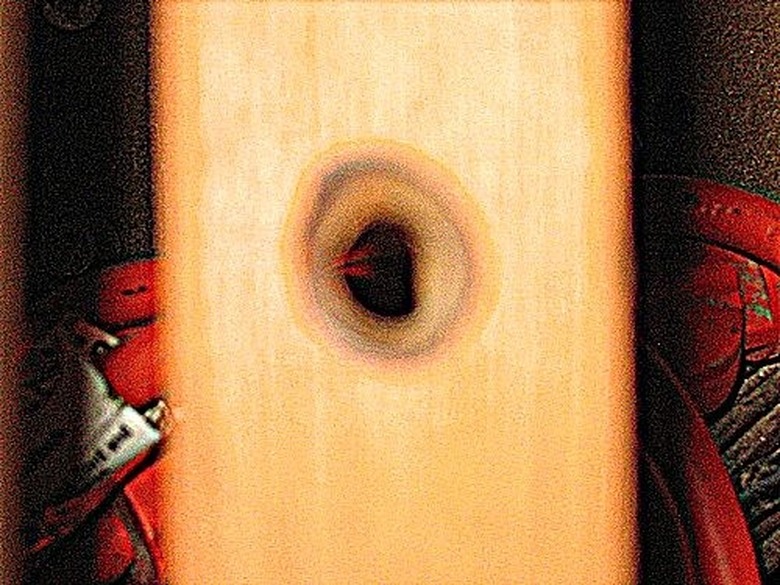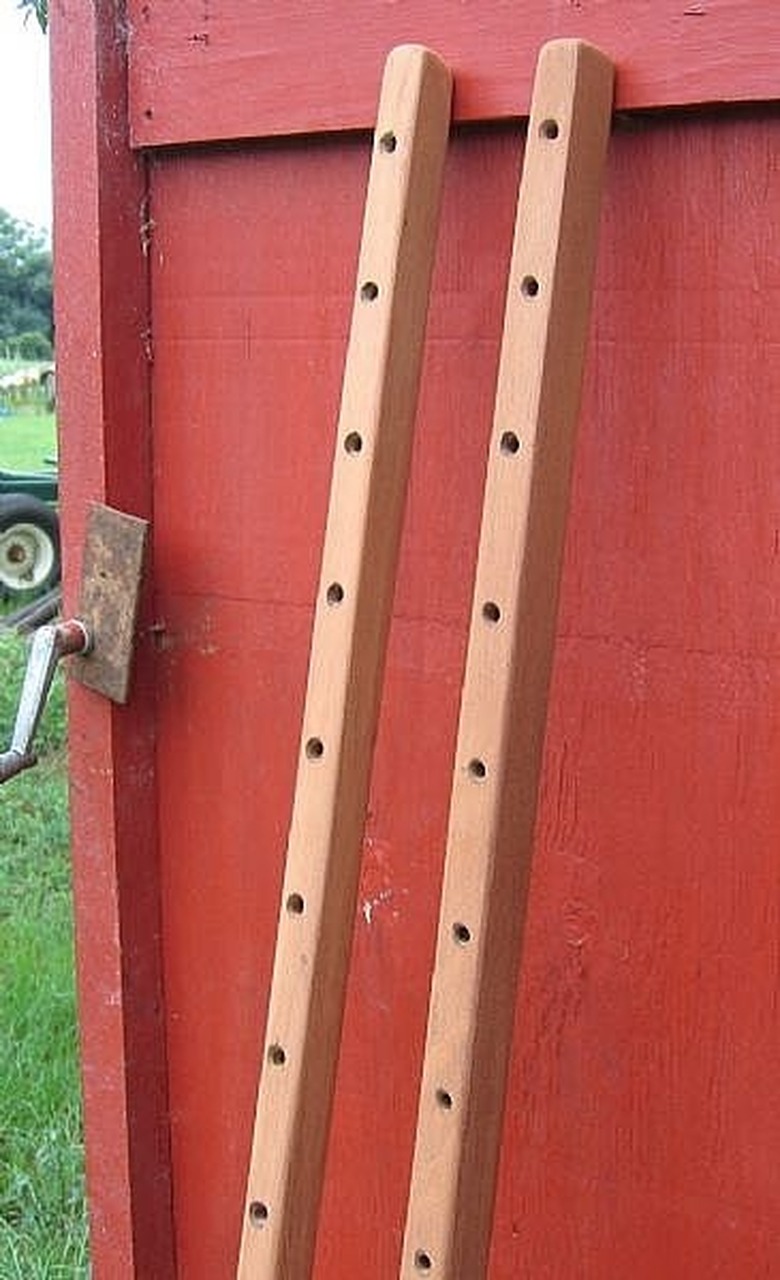How To Make And Finish Spreaders For Hammocks
Things Needed
- Hardwood boards
- Measuring tape
- Sand paper
- Electric Drill and bits
- Hand saw or electric saw
- Paint brushes
- Wood Stain
- Marine Spar Varnish
Tip
When looking for boards, check with cabinet makers and carpenters for scrap boards they may have. I lucked out and found someone who had pieces of bowed mahogany that he sold me for ten dollars. Check the cording you are going to use for the hammock to be sure it will fit through the holes before drilling them. You can hang the boards for applying the finish, using some string tied to a nail put through one of the holes.
Warning
Power tools are dangerous be sure you know how to use them safely.
The best hammocks have spreader bars that hold them open in a more or less flat position. Hammocks that lay open flat are the easiest to get into and out of, being more bed like than hammocks that wrap around the body. With some carpentry skills, some basic wood working tools, and supplies, it is possible to make a nice set of hammock spreaders that will outlast the hammock body itself.
Step 1
Pick out and purchase the wood. Two, 2 x 2 x 66 inch long pieces of wood of a high quality hardwood such as oak are needed. Hammocks, especially large hammocks must support lots of weight, so the wood must be strong. The wood must be durable for any outdoor hammock. Check the boards well before buying for splits, knots, and twists that are not wanted. Bowed boards are not necessarily bad and a bend of about 3 to 4 inches from one end to the other is even a desirable condition. A 2 by 4 can be bought and rip cut down its length to get both hammock spreaders. These are the actual sizes the boards need to be, not the sizes milled lumber is described as being, such as 2 by 4's which actually measure 1 1/2 by 3 1/2 inches.
Step 2
Cut the boards to size and mark the places for the holes. These spreaders are sized for the rope hammock and rope supports described in the articles, "How to Weave Rope Hammocks, the Main Body", and "How to Braid Hammock Support Ropes and Connect them to a Hammock". Links to these articles and others that can be helpful are listed under resources below. There are 22 holes in the spreaders for this hammock. The holes are evenly spaced and just over 2 3/4 inches apart with some 4 inches of undrilled wood at each end of the hammock spreaders. If the boards are bowed, face the holes so the bowed ends will face upward when the hammock is hung. Use a piece of paper about a foot long to make a template for marking the holes to keep from having to do repeated measurements along the boards. Cut the paper 2 inches wide and a foot long. Mark and make several holes in it just like they will be spaced on the wood. Hold the paper straight on the board and mark where the holes should go then slide it down the board to mark all the rest. Once the holes are marked, use a hammer and a dull nail or punch to place a indention at each spot. This will help keep the drill bit from wandering off target when drilling the holes in the hammock spreaders.
Step 3
Use an electric drill with a 3/8 inch bit to drill out each hole. Set the board on top of a scrap piece of wood before drilling so the far side will not chip out when the bit goes through it. Placing both boards in a clamping table will greatly help the process as will not rushing the drill. After drilling all the holes change the drill bit to a 5/8 inch one and drill just slightly into the holes on both sides of the board to round off their edges. Don't go too deeply and wobble the bit around slightly to enlarge the counter sinking. There are bits that will do the counter sinking at the same time that the holes are drilled.
Step 4
Sand and finish the hammock spreaders. Start with coarser sand paper, about 60 grit, to knock off any sharp edges and to round off the ends of the boards. Roll a section of sandpaper into a tube to pass up and down through the holes to sand out any rough spots inside them. Go over the boards with finer grit paper up to 200 grit to get them good and smooth. Sand the ends of the spreaders to round them off well so they won't be a hazard when the rope hammock is hung. Stain the wood the color wanted and allow them to dry before putting on the first coating of protective finish. The best protective finish for outside use is marine spar varnish as it will degrade less in the sunlight over time. Apply at least 3 coats, sanding slightly between coats, to dull the glossy finish so the next coat will adhere well. Allow each coat of varnish to dry thoroughly before adding the next coat. It is necessary to renew the topcoat of this finish periodical especially if the hammock is left outside. Just sand it lightly and put on a new top coat. Another way to finish the hammock spreaders is to use Tungnut oil and reapply it every year. Under resources below, there are links to other articles about making hammocks. Please rate this articleand any others you decide to check out, thank you. All contents and photos are copyrighted by Aupoet.


